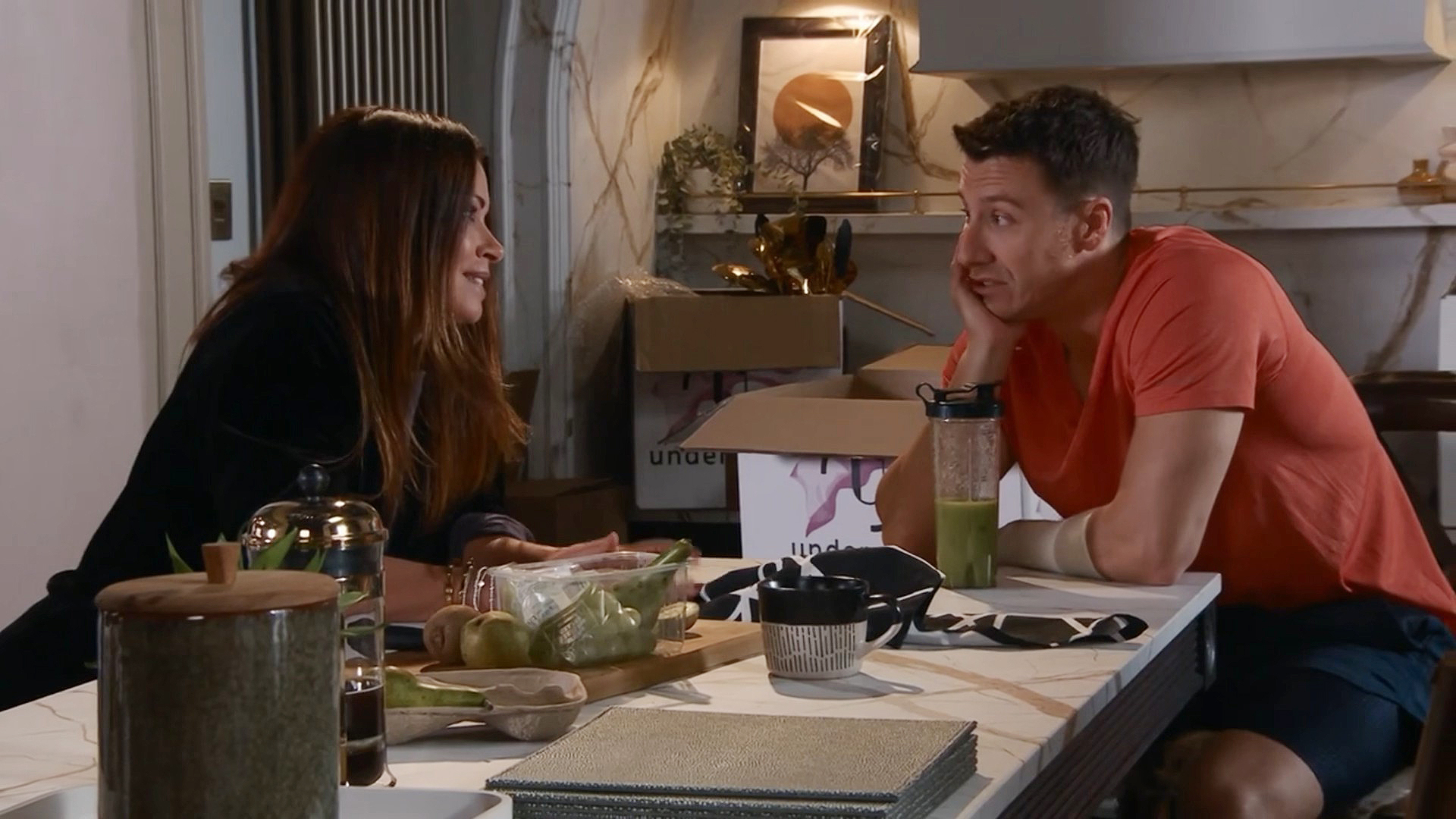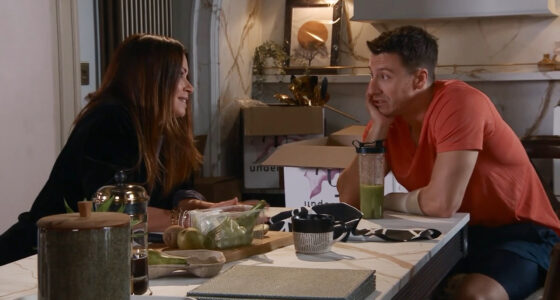Why Ryan moving in to number 6 isn’t just an acknowledgment of his connection to Carla, but a reflection of the true DNA of Coronation Street and its roots with working class Britain.
Ryan moving in with Swarla not only brings all of Carla’s family together under one roof, but it also taps directly into the reason Coronation Street was created in the first place: to put working-class life at the heart of British television. From its very first episode in 1960, Tony Warren designed Corrie to reflect the realities of tight-knit northern communities: homes were crowded, money was never limitless, and relationships were built on resilience, humour, and the occasional blazing row.
Carla and Ryan’s bond
First, let’s remember Ryan isn’t just Carla’s third cousin once-removed (technically, I checked the family tree), he’s her nephew. Ryan was born in January 1992 to Michelle Connor and Dean. While we know very little about Dean, it can be assumed that the two of them were both teenagers at the time of his birth, with Michelle being just 15 years old, turning 16 that April. In 1992, Carla was a year older than Michelle at 16, a long time friend of all the Connors and either close to, or already dating, Paul. From early in 2006, Carla and Paul both talked about their position in Ryan’s life as his aunt and uncle.

Carla had been there for Ryan his whole life, and had become his aunt through her relationship to Paul. She and Paul babysat him most of his life, and they were preferred over Liam as the responsible babysitters after Barry and Helen, Michelle’s parents, left the country for Ireland. Their spare room regularly belonged to Ryan, and Carla would let him get away with getting crumbs all over her furniture while he played video games with Paul. Michelle and Dean stayed together until after Dean’s death in 2002, when Ryan was 10. After that, both Paul and Carla stepped up to help out Ryan and Michelle more and more. They helped with money, and babysat even more regularly as Michelle adjusted to being a single mother. Carla was always ‘Auntie Carla’, not just Carla.
Despite Ryan being switched at birth, their connection shows that it’s not blood that makes the relationships in the Connor family. It is how Carla knew him and helped raise him his entire life. He’s not a thirty-three-year-old to her, he is the little boy that has always been able to call her spare bedroom home while eating all her food. Their relationship has been even more reaffirmed in recent years since Michelle left in 2019, asking Carla to look after Ryan. Ryan has been through a lot, having to escape a life of drugs then a messy relationship with Alya Nazir. Then in 2023, Carla moved Ryan in to look after him after he was a victim of an acid attack, and helped him with his self-confidence. He lived with her on and off for the next year and he became someone she lent on after the breakdown of the relationship with Peter at the end of 2024.
Lisa’s understanding
As Carla said to Lisa in the episode where she invited Ryan to live with them, she considers him part of her home, his sweaty gym bag and his presence in the family. She was ready to put Betsy and Lisa first and not invite him to live with them regardless of her concerns for her nephew. Lisa understanding Carla’s concerns and asking Ryan regardless is a sign of how deeply Lisa understands her girlfriend and what she considers important to her.
Coronation Street and multi-generational housing
The idea of multi-generational housing is not new to Coronation Street. In fact, it’s moulded into the fabric of the show as it was made to represent the working class. It was groundbreaking when it was first released 65 years ago to a slate of bad reviews from the middle and upper class press. It was the first time a Northern English accent was heard on television and the first time that the working class was properly represented. It was popular too, of course the majority of the country enjoyed seeing themselves on TV. By March 1961 it was number one in television ratings and it held that spot for the entire year.
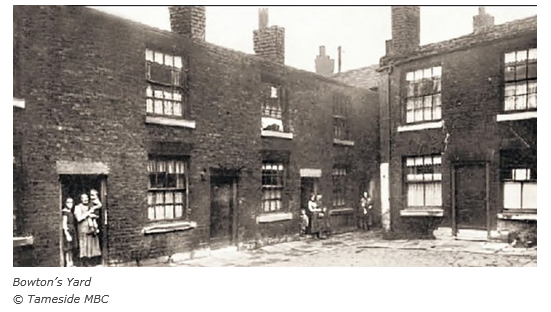
A historical working class reality
Multi-generational housing has always been prevalent in working class communities. Whether that was within the original British Celtic, Gaelic, Pict and Anglo-Saxon tribal communities, and then within the feudal system as peasants that extended from the medieval period to the reign of Queen Victoria, where we saw the emergence of the Industrial Revolution. The working class and culture surrounding the working class as we recognise it today emerged in that era. The inherent poverty of the working class forced multi-generational housing throughout all of this but especially after the Industrial Revolution.
There was no access to savings or pensions and if a working class person was lucky enough to live to retirement, they had to rely on their children to support them living in multi-generational housing. Life expectancy was, however, low. The working class could not access healthcare and the mills, factories and mines they had no choice but to work in, had no safely protocols and unions were not yet in place to protect to protect the worker consistently until the 1940s. Furthermore, smoking and pollution were common place, cholera infected the water supply, every birth risked the life of the mother, and there weren’t vaccines to prevent against illness. Despite this, cost of living was expensive and even working adults relied on their children whether they were adults themselves or not. Working age rules were lax and not enforced until 1933, and regardless of the comprehensive nature of the 1933 act, work-arounds remained that allowed working class families to survive. These largely remained until the introduction of modern technology, online banking and payroll, that gave the government oversight into the contracts.
Women: The backbone of the working class home
The most important person in the multi-generational home back in this period was the woman. History as a story-telling medium likes to present the historical woman as confined to the home, but amongst the lesser told working class communities, woman have always worked for a wage as well as doing unpaid domestic labour at home: cooking, cleaning, shopping, budgeting, acting as the primary caretaker of the child and retiree family members, and organising work. Coronation Street represented this woman. Of 21 original cast members, women outnumbered the men with 12 characters and each of them had a job with the exception of the pregnant Linda Cheveski who had, however, worked in the factory from the age of 13 up until her marriage and school-age Lucile Hewitt. Elsie Tanner worked in a department store, Annie Walker was the landlady of the Rover’s, Ena Sharples was a caretaker in a chapel, Minnie Caldwell had retired from a mill just months before the show began to follow her and collected the pension newly afforded to her by the 1945 Labour Government, Concepta Riley was a Rover’s barmaid, Esther Hayes was a librarian, Florrie Lindley ran the corner shop, Martha Longhurst collected her pension but supplemented it with cleaning work, Christine Appleby worked in the factory, and Ida Barlow was a hospital cleaner.
Post-War change and the 1945 Labour government
By 1960, when the show began, the importance of women to the working class had only been elevated during the wars with men going off to fight in the war. However much of the fabric of the working class had been changed in the post-war era. The 1945 Labour Government introduced social support that no longer made poverty the inevitable state of the working class person, for the first time survival was possible. This was made possible through the nationalisation of twenty percent of the economy, largely the industries populated by the working class, the formalisation and acceptance of the union, the introduction of safety protocols as well as regulated worker’s compensation, unemployment benefits, maternity benefits, sick pay, and sick leave for the first time. There was also the family benefit paid exclusively to the mother to help raise the child, national milk and cold liver oil accessible to all at no cost to keep children healthy and for the first time, a governmental welfare state, as opposed to private orphanages, which monitored school attendance and concerned themselves with the environment of the child. As mentioned before, the pension was also introduced and immediately made accessible to all those of retirement age. Public housing was also improved and by 1960 the first council flats were opening and council housing dominated new towns and old cities across the country, making the property ladder accessible for the first time. It was groundbreaking and the cycle of poverty was broken.

Multi-generational housing, however, remained. It never solely existed because it was essential but because family and connections were always important. Ken Barlow, in his third year of university in 1960, moved out of student housing and home to stay with his family and, by 1961, after his mother’s death, he became the primary caretaker in the home. After the death of his wife in 1971, he then moved in with his father-in-law at number 1 which has remained a multi-generational home. At one point it housed four generations including Blanche Hunt, Deirdre Barlow’s mother, Ken, Deirdre, Peter and Simon. Currently, it houses three including Ken, Tracy, Steve and Amy. However, Ken did move out with his wife, Valerie, in 1962 and that and his introduction to the property ladder by purchasing 9 Coronation Street was made possible by the broken cycle of poverty. His family could survive without his income and he and his wife could afford a home on a teacher’s and hairdresser’s salaries.
The Thatcher era and housing crisis
However, as you probably know by the thoughts in your brain right now, like how on earth can anyone afford to buy a house on a teacher’s and hairdresser’s salary, this didn’t last forever. The right to buy ended council housing and only benefited a single generation, and the policies of Margaret Thatcher’s neo-liberal economy made the return of widespread, necessary multi-generational housing among the working class inevitable. The impact was seen on Coronation Street itself. No better exemplified by Eileen Grimshaw who, by the early 2000s, lived with her two adult sons, Jason and Todd, as well as having a minimum of one lodger at all times including Sean Tully, Violet Wilson, Marcus Dent and Shona Ramsey. Eileen mentioned it endlessly, depsite working a full-time job the entire time she was on the show, she was unable to afford rent, and later a mortgage, without the help of the income of those she lived with. Jason and Todd throughout their adult lives moved in with her after being unable to afford their own housing.
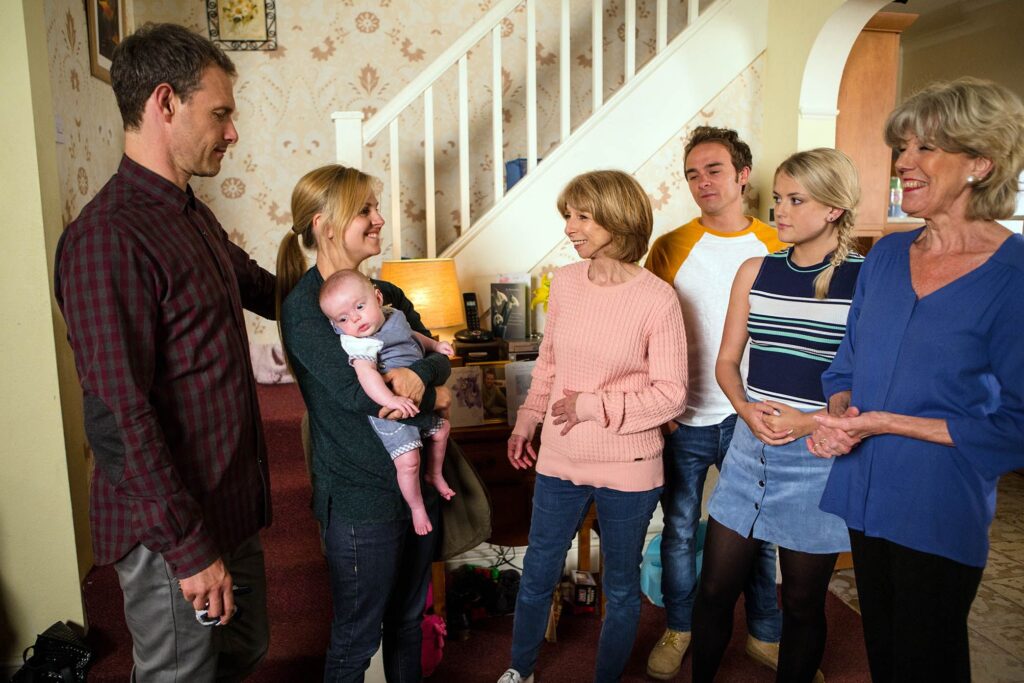
Families of the street: Grimshaws, Platts, Websters, Nazirs
Multi-generational housing wasn’t limited to the Grimshaws. Every family and every house on the street has had it. The Platts is the most longstanding. Whether it is Gail or David owning number eight, it has always been multi-generational. Housing Gail’s adult children: Nick, David and Sarah as well as her grandchildren: Bethany, Max and Lily and the countless number of partners of both Sarah and David, as well as all three of David’s serious relationships: Tina, Kylie and Shona. Audrey now occupies Gail’s granny annex and keeps alive the multi-generational tradition of number eight.
Then there are the Webster’s, although our Sally Metcalfe would never sink so low as to call it multi-generational housing, both Sophie and Rosie stayed living with either Kevin or Sally into their adulthood. They only moved out once they left the street, or very temporarily, in the case of Rosie, into the Grimshaws while dating Jason. Before Sally owned number 4, it was also home to multi-generational housing when Fred Elliot lived there with his son, Ashley, and his grandson, Joshua. Number 6 also has housed many families including Gary Windass with his adult parents, Anna and Eddie. After his parents split and Anna began to date Owen, Katie, his adult daughter, also moved in with her son, Joseph. After the Windasses, the Nazirs moved in three generations including Yasmeen and her husband, Sharif, their son Kal and his children Alya and Zeedan. Zeedan’s wife, Rana, also lived there for a period and even Aidan Connor temporarily took up residence with the Nazirs in late 2017.
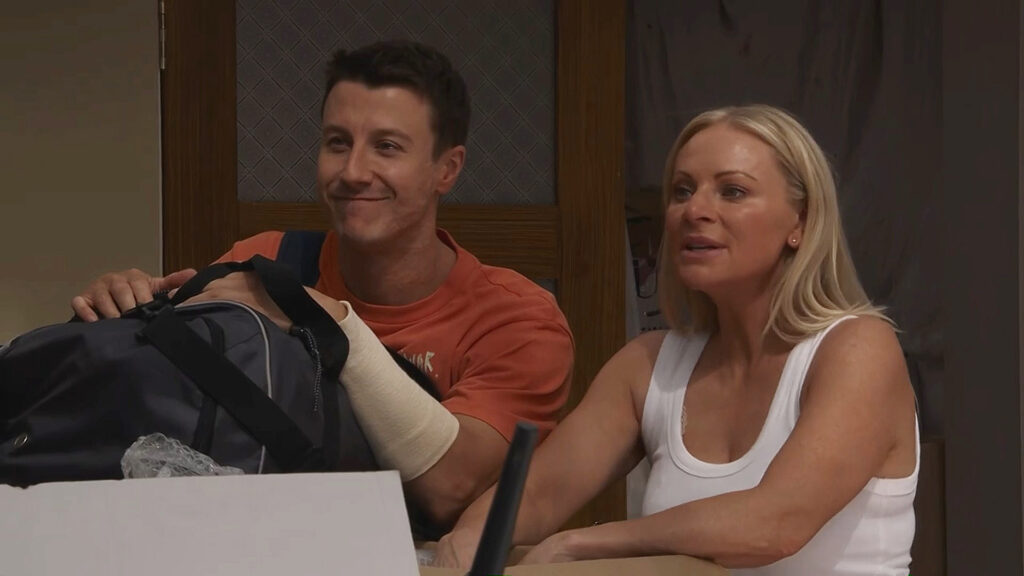
Ryan as the modern example
Now number 6 is in the hands of Carla and Lisa and they are continuing the longstanding Coronation Street tradition of representing the working class, and Ryan is the perfect representation. You can have a full-time job and a university education, just like Ryan, but it does not mean you can afford to live with the outrageously high rents, water bills, electricity and wi-fi costs, council tax, the TV licence, a phone, a laptop, commuting costs either in the petrol expense or on the eye-wateringly expensive public transport, and the unbelievably high cost of food. Living alone is now a fever dream of the past. Living has become expensive and no amount of cutting down on coffees or not eating avocado on toast will change that. Multi-generational housing is seen as shameful but the property ladder has no bottom rungs anymore, between Thatcher’s 1980s right to buy and the amazing mortgage deals that caused the 2008 economic crash, young people today are left with two choices: a house share or often criminally neglected rented housing. Either you share that home with family or with a stranger.
Haven’t we all had a housemate who lined up dolls in the window and because of the weird shape of the really old (and cold) house you rented, the dolls looked right in your window and plotted to kill you (not at all based on a real experience). You get stuck with one shelf in the fridge for your food and it all ends up smelling of the onion that your housemate refused to cover up or gets soaked in the sauce they don’t properly put in a sealed container. You end up with a mini-fridge to protect what’s yours and keep all your crockery and food in your room after they refuse to do washing up and maggots invade the sink. Finally, you are saved by a family member and even if moving home means you loose an entire packet of party rings, that you literally just purchased, to your brother’s 1am snacking session, at least it’s socially acceptable to yell at him about it, sneak into his room, steal a couple of quid from him and replace them. There are also no mice or maggots to contend with and you don’t have to block your door with a sheet to stop the abnormally large mouse from running in while you’re just trying to play the Sims (I’m still traumatised).
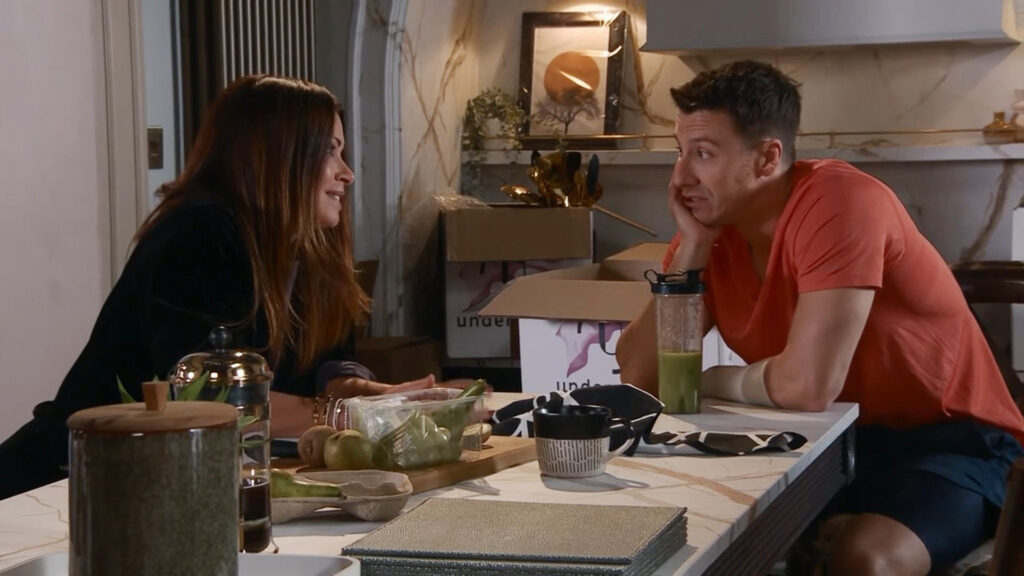
More than an address – Home is family
Carla has known Ryan her whole life, and they are the only family each other has had over the last few years. People have criticised the move, said Ryan is too old to live with his aunt, but then what is the age that she should stop worrying about his health and happiness? Stop caring that he’s living somewhere unsafe? To her, he’s the same little boy that occupied the spare bedroom, left a sweaty PE kit on the floor, and crumbs all over the sofa. To her, that’s home.
Lisa sees and understands that. She understands Carla and her ‘family that can never quite make sense on paper but makes sense to anyone who spends five minutes with her’, and understands how deeply and unconditionally she cares for those she loves and considers family. Whether that’s Ryan and Michelle or Roy and Nina or Lisa and Betsy. Carla finally has someone who understands her without having to ask for it, and that is an incredible show of love.

Coronation Street’s working class roots will always matter
If you don’t get it, that’s fine, but I would implore you to consider Coronation Street’s roots. The working class in the UK has changed, it doesn’t look the same as it did in 1960, but it still exists and it’s woven into the fabric of what Corrie is as a show. That includes the culture, the accents, the pubs, the relationship with the law, the fashion, the make-up, the representations of masculinity and, at the end of the day, multi-generational housing will always be a part of that.
I, for one, adore it and cannot wait to see wait the Connor-Swains have in store for us next.
Images copyright of ITV

